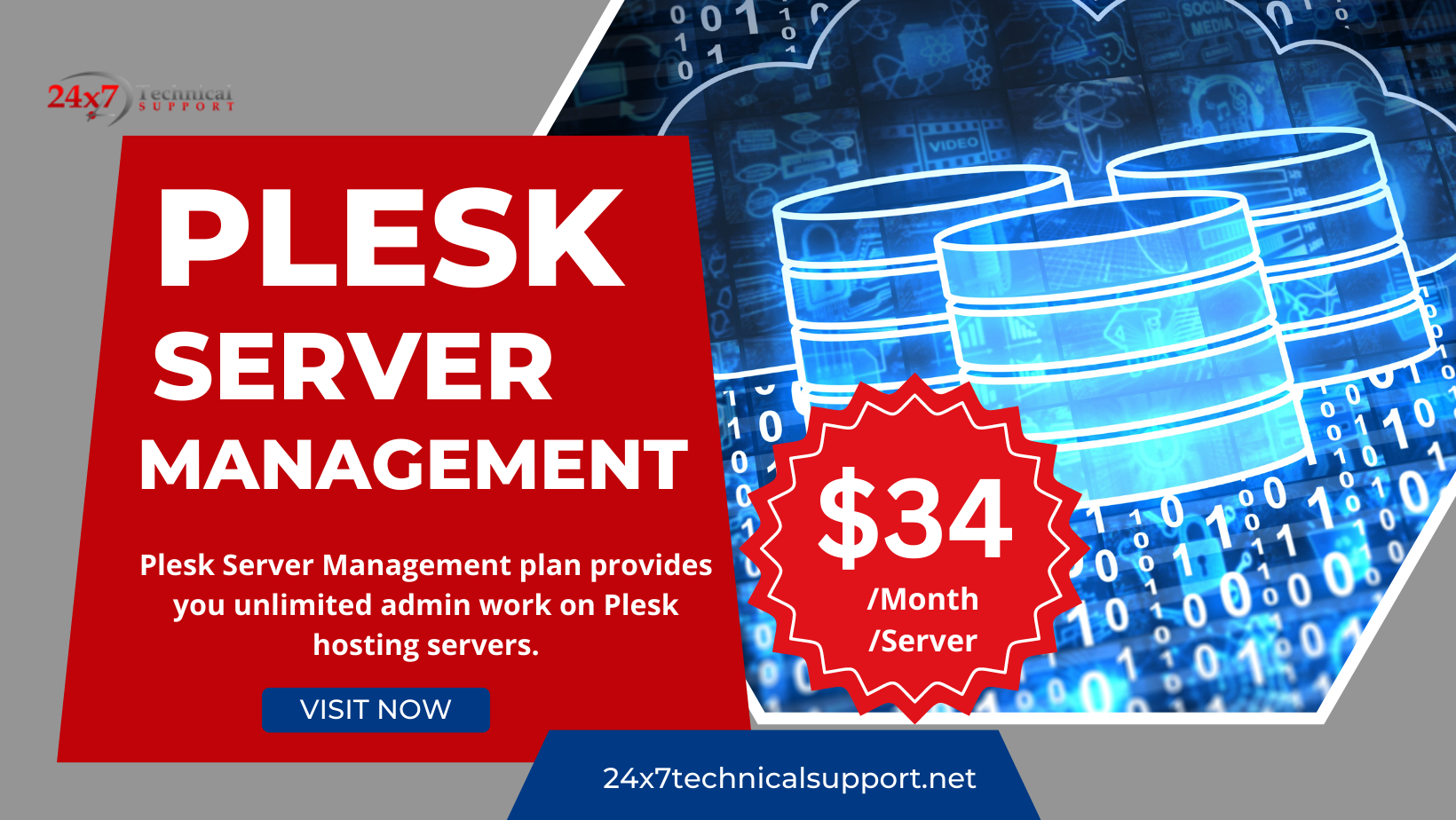
Introduction:
When it comes to server management, Plesk stands out as a powerful and user-friendly control panel. With its robust features and intuitive interface, Plesk simplifies server administration tasks, making it a preferred choice for hosting providers and system administrators. In this blog, we will explore the world of Plesk server management, uncovering its key features, best practices, and tips for optimizing performance and security.
.jpg)
Understanding Plesk:
Plesk is a comprehensive web-based control panel that allows users to efficiently manage their hosting environments. It offers a wide range of tools and features, providing a centralized platform for domain management, email configuration, database administration, security settings, and much more. Plesk supports both Linux and Windows operating systems, making it versatile and suitable for various hosting environments.
Key Features and Functionality:
a. Domain and Website Management: Plesk simplifies domain and website management, allowing users to effortlessly create and manage domains, subdomains, and domain aliases. It provides tools for website deployment, file management, FTP configuration, and web server settings.
b. Email Management: With Plesk, users can set up and manage email accounts, mailing lists, autoresponders, and email forwarders. It supports popular email protocols, such as POP3, IMAP, and SMTP, and provides spam filtering and antivirus protection.
c. Database Administration: Plesk offers support for popular database systems, including MySQL, PostgreSQL, and Microsoft SQL Server. It provides tools for creating databases, managing users, and executing SQL queries efficiently.
d. Security and Backup: Plesk includes robust security features such as SSL certificate management, firewall configuration, and IP blocking. It facilitates automated backups and restoration of website files and databases, ensuring data protection and recovery.
e. WordPress Management: Plesk provides seamless integration with WordPress, offering tools for easy installation, updates, and management of WordPress websites. It simplifies tasks like plugin and theme management, staging environments, and security enhancements.
.png)
Best Practices for Plesk Server Management:
a. Regular Updates: Keep your Plesk installation up to date with the latest patches and updates to ensure optimal performance and security.
b. Strong Passwords: Enforce strong, unique passwords for Plesk administrator and user accounts to prevent unauthorized access.
c. Resource Monitoring: Monitor server resources such as CPU usage, memory, and disk space to identify and resolve performance issues proactively.
d. Firewall Configuration: Configure a robust firewall to restrict access to your server, allowing only necessary ports and protocols.
e. Backup Strategy: Implement a regular backup strategy to safeguard website files, databases, and configurations. Store backups on separate servers or in the cloud for redundancy.
Performance Optimization:
a. Caching: Enable caching mechanisms, such as server-side caching and content caching, to improve website performance and reduce server load.
b. Content Delivery Network (CDN): Integrate a CDN to distribute website content globally, reducing latency and improving page load times.
c. GZIP Compression: Enable GZIP compression to reduce the size of transmitted data, resulting in faster page loading for visitors.
d. Database Optimization: Optimize database queries, indexes, and table structures to enhance database performance and efficiency.
e. Server Tweaks: Fine-tune server settings, such as PHP configurations, web server optimization, and caching mechanisms, for maximum performance.
Security Measures:
a. Two-Factor Authentication (2FA): Enable 2FA for Plesk login to add an extra layer of security and prevent unauthorized access.
b. Security Extensions: Utilize security extensions available in Plesk’s extension catalog to enhance security measures, such as intrusion detection and prevention systems.
c. SSL/TLS Encryption: Implement SSL certificates and enforce HTTPS connections to secure data transmission between clients and your server.
d. Regular Audits: Conduct periodic security audits to identify vulnerabilities, update software versions, and implement additional security measures as needed.
e. User Permissions: Assign appropriate permissions to users, limiting their access to only the necessary resources and reducing the risk of unauthorized actions.
.png)
Conclusion:
Plesk server management empowers users with its comprehensive feature set, intuitive interface, and robust security measures. By leveraging its capabilities, implementing best practices, and optimizing performance, you can effectively manage your hosting environment and deliver a seamless experience to your clients. Embrace the power of Plesk and unlock the full potential of your server management endeavors.
Visit us for Dedicated Support.